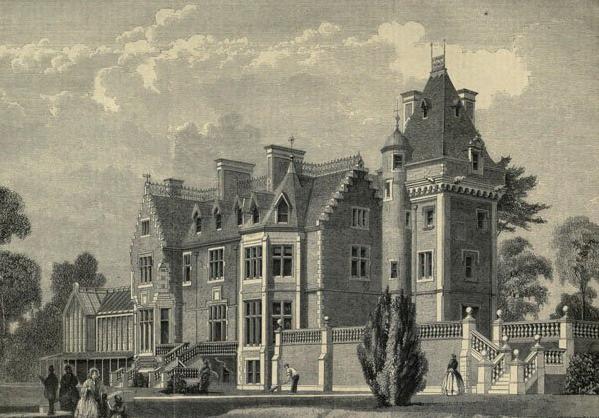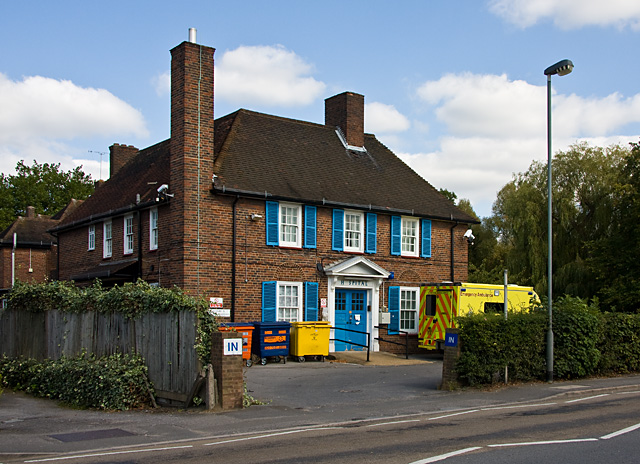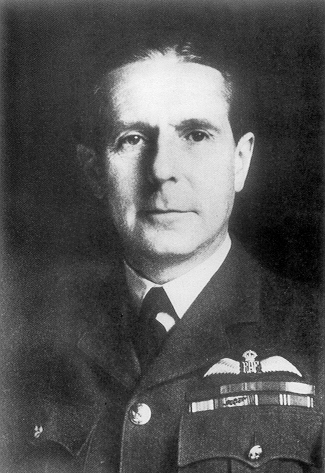|
Eastbury Park, Northwood
Eastbury Park was an estate in Eastbury near Northwood, London. History The house was designed by David Bryce and built by a Mr Harding in the Scottish Baronial style for David Carnegie. Completed in 1857, the house was sold to Frank Carew in 1887 and then sold on to the Royal Air Force for use as an officers' mess for RAF Coastal Command RAF Coastal Command was a formation within the Royal Air Force (RAF). It was founded in 1936, when the RAF was restructured into Fighter, Bomber and Coastal commands and played an important role during the Second World War. Maritime Aviation ... in 1938. It burnt down in 1969. References {{coord, 51.6204, -0.4116, display=title Country houses in Hertfordshire ... [...More Info...] [...Related Items...] OR: [Wikipedia] [Google] [Baidu] |
Eastbury Park
Eastbury Park was a country estate near Tarrant Gunville in Dorset, England. It contained a large mansion designed by Sir John Vanbrugh. The mansion has not survived, but its former service wing has become a country house known as Eastbury House, a Grade I listed building. History The house was designed by Vanbrugh for George Dodington, who was Secretary to the Treasurer of the Navy. Construction started in 1718 and was completed under the stewardship of Dodington's nephew, George Dodington, 1st Baron Melcombe, in 1738 at a final cost £140,000: it had a large garden which was designed by Charles Bridgeman. The house was inherited by Richard Grenville-Temple, 2nd Earl Temple in 1762, who had no use for it, and he had it demolished in 1782. It was bought by Thomas Wedgwood, son of Josiah Wedgwood and pioneer of early photography in 1800; his brother Josiah Wedgwood II had bought the adjacent Gunville House in Tarrant Gunville in 1799. The service wing, designed by Vanbrugh an ... [...More Info...] [...Related Items...] OR: [Wikipedia] [Google] [Baidu] |
Eastbury, Hertfordshire
Eastbury is a settlement in the Three Rivers district of Hertfordshire, adjacent to the Greater London suburb of Northwood in Hillingdon. Other settlements nearby include Moor Park and South Oxhey, and Eastbury is about equal distance between the Northwood and Moor Park tube stations (Metropolitan line). Northwood Headquarters is in Eastbury. The post town is Northwood. It is in the Three Rivers Ward of Moor Park and Eastbury, and since 1 April 2017, the civil parish of Batchworth. Eastbury is served by Eastbury Farm JMI School. This was rated in 2007 as ''Outstanding'' by Ofsted and is one of the top 1% primary school A primary school (in Ireland, India, the United Kingdom, Australia, New Zealand, Trinidad and Tobago, Jamaica, South Africa, and Singapore), elementary school, or grade school (in North America and the Philippines) is a school for primary ...s in England. References Hamlets in Hertfordshire Three Rivers District {{hertfordshire-geo-stub ... [...More Info...] [...Related Items...] OR: [Wikipedia] [Google] [Baidu] |
Northwood, London
Northwood is an area in the London Borough of Hillingdon, North West London, located northwest of Charing Cross. Northwood was part of the ancient parish of Ruislip, Middlesex. The area was situated on the historic Middlesex boundary with Hertfordshire, and since being incorporated into Greater London in 1965, has been on the Greater London boundary with that county. It has also been within the Metropolitan Police District Metropolitan_Police_District#1840_revision, since 1840. The area consists of the elevated settlement of Northwood and Northwood Hills, both of which are served by stations on the Metropolitan line of the London Underground. At the 2011 United Kingdom census, 2011 census, the population of Northwood was 10,949, down from 11,068 in 2008, while the population of Northwood Hills was 11,578, up from 10,833 in 2001. Northwood adjoins Ruislip Woods National Nature Reserve. It was also used for location filming of the Goods' and Leadbetters' houses and surrounding s ... [...More Info...] [...Related Items...] OR: [Wikipedia] [Google] [Baidu] |
London
London is the Capital city, capital and List of urban areas in the United Kingdom, largest city of both England and the United Kingdom, with a population of in . London metropolitan area, Its wider metropolitan area is the largest in Western Europe, with a population of 14.9 million. London stands on the River Thames in southeast England, at the head of a tidal estuary down to the North Sea, and has been a major settlement for nearly 2,000 years. Its ancient core and financial centre, the City of London, was founded by the Roman Empire, Romans as Londinium and has retained its medieval boundaries. The City of Westminster, to the west of the City of London, has been the centuries-long host of Government of the United Kingdom, the national government and Parliament of the United Kingdom, parliament. London grew rapidly 19th-century London, in the 19th century, becoming the world's List of largest cities throughout history, largest city at the time. Since the 19th cen ... [...More Info...] [...Related Items...] OR: [Wikipedia] [Google] [Baidu] |
David Bryce
David Bryce Fellow of the Royal Society of Edinburgh, FRSE FRIBA Royal Scottish Academy, RSA (3 April 1803 – 7 May 1876) was a Scotland, Scottish architect. Life Bryce was born at 5 South College Street in Edinburgh, the son of David Bryce (1763–1816) a grocer with a successful side interest in building. He was educated at the Royal High School (Edinburgh), Royal High School and joined the office of the architect William Burn in 1825, at the age of 22. By 1841, Bryce had risen to be Burn's partner. Burn and Bryce formally dissolved their partnership in 1845, with disputes over the building of St Mary's Church, Dalkeith, Midlothian, for the Duke of Buccleuch. Burn moved to London, and Bryce succeeded to a very large and increasing practice, to which he devoted himself with the enthusiasm of an artistic temperament and untiring energy and perseverance. In the course of a busy and successful career, which was actively continued almost down to his death, he attained t ... [...More Info...] [...Related Items...] OR: [Wikipedia] [Google] [Baidu] |
Scottish Baronial Architecture
Scottish baronial or Scots baronial is an architectural style of 19th-century Gothic Revival which revived the forms and ornaments of historical architecture of Scotland in the Late Middle Ages and the Early Modern Period. Reminiscent of Scottish castles, buildings in the Scots baronial style are characterised by elaborate rooflines embellished with conical roofs, tourelles, and battlements with machicolations, often with an asymmetric plan. Popular during the fashion for Romanticism and the Picturesque, Scots baronial architecture was equivalent to the Jacobethan Revival of 19th-century England, and likewise revived the Late Gothic appearance of the fortified domestic architecture of the elites in the Late Middle Ages and the architecture of the Jacobean era. Among architects of the Scots baronial style in the Victorian era were William Burn and David Bryce. Romanticism in Scotland coincided with a Scottish national identity during the 19th century, and some of the mo ... [...More Info...] [...Related Items...] OR: [Wikipedia] [Google] [Baidu] |
Royal Air Force
The Royal Air Force (RAF) is the Air force, air and space force of the United Kingdom, British Overseas Territories and Crown Dependencies. It was formed towards the end of the World War I, First World War on 1 April 1918, on the merger of the Royal Flying Corps (RFC) and the Royal Naval Air Service (RNAS). Following the Allies of World War I, Allied victory over the Central Powers in 1918, the RAF emerged as the largest air force in the world at the time. Since its formation, the RAF has played History of the Royal Air Force, a significant role in Military history of the United Kingdom, British military history. In particular, during the Second World War, the RAF established Air supremacy, air superiority over Nazi Germany's Luftwaffe during the Battle of Britain, and led the Allied strategic bombing effort. The RAF's mission is to support the objectives of the British Ministry of Defence (United Kingdom), Ministry of Defence (MOD), which are to "provide the capabilities nee ... [...More Info...] [...Related Items...] OR: [Wikipedia] [Google] [Baidu] |
RAF Coastal Command
RAF Coastal Command was a formation within the Royal Air Force (RAF). It was founded in 1936, when the RAF was restructured into Fighter, Bomber and Coastal commands and played an important role during the Second World War. Maritime Aviation had been neglected in the inter-war period, due to disagreements between the Royal Navy (RN) and RAF over the ownership, roles and investment in maritime air power.Buckley, 2018. p.85 The Admiralty's main concern until 1937 was the return of the Fleet Air Arm to the Royal Navy while the RAF concentrated on the development of a bombing force to provide a deterrent. Coastal Command was referred to as the "Cinderella Service" by A V Alexander, the First Lord of the Admiralty in November 1940. Soon after RAF Coastal Area was elevated to Coastal Command, its headquarters moved from Lee-on-Solent to Northwood in northwest London. During the Second World War, Coastal Command's most important contribution was the protection of Allied convoys ... [...More Info...] [...Related Items...] OR: [Wikipedia] [Google] [Baidu] |






